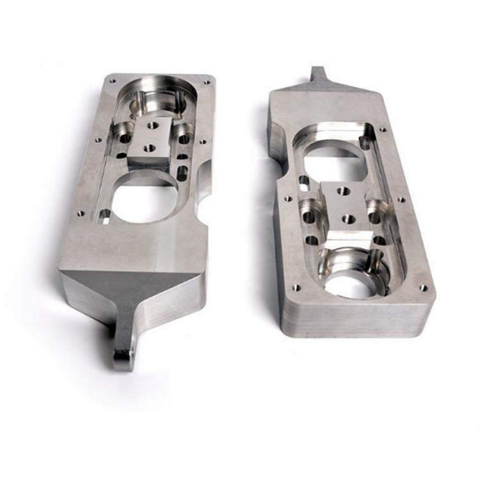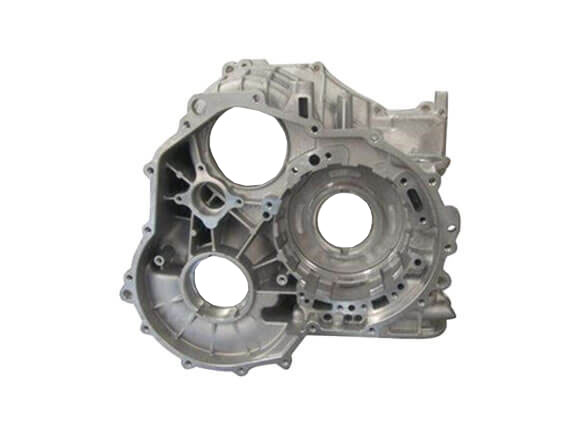Aluminum Casting Explained: Secret Realities and Insights for Sector Professionals
Aluminum casting functions as a crucial process in modern-day production, shaping elements throughout numerous fields. Its diverse techniques, such as sand and die casting, satisfy different manufacturing needs. The unique homes of aluminum alloys boost their applicability, yet tests continue to be in keeping top quality and efficiency. Understanding these facets is necessary for market experts. What are the current improvements and best practices that can further enhance this procedure?
Introduction of Aluminum Casting Processes

Trick components of aluminum casting processes include the prep work of molds, which may be made from sand, metal, or ceramic products, depending on the meant usage. Furthermore, temperature level control is crucial to ensure appropriate melting and solidification of aluminum.
The casting process enables for elaborate designs and can achieve high levels of dimensional accuracy. When cooled down, the spreadings may go through finishing operations such as machining or surface area therapy to meet details efficiency requirements. Overall, aluminum casting acts as a functional production technique, successfully meeting the varied demands of various industries.
Sorts Of Aluminum Casting Methods
In the domain name of aluminum casting, numerous methods are employed to attain different outcomes. Sand casting techniques offer flexibility and cost-effectiveness for intricate shapes, while die casting processes provide high accuracy and efficiency for automation. Comprehending these methods is essential for picking the appropriate technique based on job needs.
Sand Casting Techniques
Sand casting methods stand for a fundamental approach in aluminum casting, where sand is utilized as a mold and mildew material to shape liquified steel. This process entails producing a pattern from the desired part, which is then put in a sand mixture to create a mold and mildew. The sand is compacted around the pattern, and after removal, it develops a tooth cavity in the shape of the part. Molten aluminum is poured into this cavity, permitting it to strengthen and cool. One considerable benefit of sand casting is its adaptability; it can suit intricate forms and big parts. Furthermore, the materials utilized are reasonably low-cost, making it an available choice for numerous production applications in the aluminum sector.
Die Casting Processes
Die casting procedures are a noticeable method for shaping aluminum components, using high-pressure strategies to compel liquified metal into precisely engineered molds. This procedure is especially preferred for its capability to create complex shapes with limited resistances and a smooth finish. There are two main kinds of die casting: warm chamber and cold chamber. Hot chamber die casting appropriates for steels with reduced melting points, enabling for faster production rates. On the other hand, chilly chamber die casting is excellent for greater melting point steels, calling for a different melting furnace. Both methods improve performance and lower product waste, making them essential in auto, aerospace, and durable goods industries. Understanding these processes aids experts select one of the most proper technique for their details applications.
Product Characteristic of Aluminum Alloys

Toughness and Durability
Strength and longevity are vital qualities of aluminum alloys that make them ideal for different casting applications. These products display a favorable strength-to-weight proportion, enabling the creation of light-weight yet durable elements. When it come to tensile stamina, details aluminum alloys can be crafted to withstand considerable tons without warping. This property is particularly essential in markets such as aerospace and automotive, where efficiency and safety and security are critical. Additionally, aluminum alloys usually retain their mechanical buildings under varied temperature level problems, ensuring consistent performance. Get More Information The innate ductility of these alloys additionally enables reliable shaping throughout the casting procedure, making it less complicated to generate complicated geometries. Generally, the strength and toughness of aluminum alloys add greatly to their prevalent usage in sophisticated applications.
Rust Resistance Characteristics
While aluminum alloys are treasured for their stamina and lightweight residential properties, their rust resistance is another important characteristic that boosts their viability for different applications. Aluminum normally creates a protective oxide layer when exposed to dampness, which helps to avoid further oxidation. This fundamental building makes aluminum alloys particularly important in atmospheres prone to deterioration, such as marine and commercial settings. In addition, different alloy compositions can influence resistance levels, with certain alloys specifically crafted to enhance this particular. Treatments like anodizing can additionally enhance corrosion resistance by enlarging the oxide layer. Comprehending the deterioration resistance of aluminum alloys is vital for sector experts when selecting products for jobs requiring toughness and longevity in difficult settings.
Advantages of Aluminum Casting in Manufacturing
Aluminum casting deals numerous benefits in production, making it a favored selection for various markets. One substantial advantage is its lightweight nature, which adds to minimized transport expenses and improved power efficiency in end items. Moreover, aluminum's superb thermal and electrical conductivity improves performance in applications requiring warmth dissipation or electrical conduction.
The product's capacity to be cast into intricate shapes permits style versatility, lowering the demand for additional machining processes. On top of that, aluminum casting shows premium deterioration resistance, causing longer item life expectancies and reduced maintenance expenses.

Common Applications of Aluminum Castings
The versatility of aluminum casting allows its widespread use throughout various markets. Common applications include auto parts, where light-weight and corrosion-resistant components, such as engine blocks and transmission real estates, boost car efficiency. In the aerospace industry, aluminum castings are made use of for structural components, offering stamina without including considerable weight.
In addition, the electrical market advantages from aluminum castings in making units and warmth sinks, where thermal conductivity is vital. The durable goods sector additionally includes aluminum spreadings in items like cookware, furniture, and decorative products, combining visual appeals with performance.
The construction industry employs aluminum castings for architectural aspects, window structures, and components, which provide toughness and design versatility. Generally, the diverse applications of aluminum spreadings emphasize their value in modern-day production, adding to improvements in effectiveness and product design throughout multiple fields.
Innovations and Technical Innovations
As industries remain to progress, advancements in aluminum casting description modern technology are changing manufacturing processes and product capabilities. Innovations in 3D printing and additive production have actually allowed the development of complex geometries that were formerly difficult to achieve with traditional approaches. These modern technologies enable for rapid prototyping, reducing preparations and expenses.
Additionally, renovations in mold and mildew design and products have enhanced the casting procedure by raising effectiveness and lowering waste. The integration of wise manufacturing methods, such as IoT tools and real-time data analytics, permits far better surveillance and optimization of production specifications, resulting in better outputs.
Advancements in aluminum alloys provide improved toughness, rust resistance, and light-weight homes, catering to the expanding demands in published here aerospace and automobile fields. Collectively, these advancements are not just enhancing performance but likewise fulfilling the rigorous standards of contemporary design applications.
Best Practices for High Quality Control in Aluminum Casting
Guaranteeing high-quality outputs in aluminum casting needs adherence to finest techniques that incorporate various stages of the production process. Initially, detailed material examination is important to verify the high quality of aluminum alloys made use of, as contaminations can greatly affect the final product. Carrying out precise melting and putting methods reduces flaws; maintaining excellent temperatures protects against oxidation and promotes uniformity.
Mold and mildew design plays a critical role; using computer-aided layout (CAD) can improve accuracy and lower human error. Normal surveillance of the cooling process is essential to avoid bending and contraction. Furthermore, utilizing non-destructive screening techniques, such as ultrasonic or X-ray evaluations, helps recognize interior flaws without harming the elements.
Finally, developing a feedback loophole with operators and designers cultivates constant renovation, guaranteeing that quality assurance procedures evolve along with technical developments. By complying with these finest techniques, suppliers can enhance the reliability and efficiency of aluminum castings.
Regularly Asked Inquiries
What Are the Ecological Influences of Aluminum Casting?
The ecological effects of aluminum casting consist of substantial power intake, greenhouse gas exhausts, and prospective water pollution from shop operations. Furthermore, bauxite mining for aluminum ore can lead to habitat damage and dirt degradation.
Exactly How Does Aluminum Casting Compare to Other Steel Casting Processes?
Aluminum casting generally uses benefits in light-weight components and deterioration resistance compared to various other processes, such as iron or steel casting, which might offer higher stamina however result in heavier and less corrosion-resistant products. - Aluminum Foundry
What Are Common Flaws in Aluminum Castings and Their Reasons?
Usual problems in aluminum castings consist of porosity, contraction, and incorporations. Causes frequently originate from incorrect putting methods, poor mold design, or contamination of the liquified steel, impacting the end product's honesty and efficiency.
What Safety and security Safety Measures Should Be Taken Throughout Aluminum Casting?
During aluminum casting, crucial security precautions consist of wearing protective gear, making certain appropriate air flow, maintaining a clean work space, taking care of molten metal with treatment, and adhering to well established protocols to minimize threats of burns, inhalation risks, and accidents.
How Can I Boost the Efficiency of My Aluminum Casting Workflow?
To improve effectiveness in aluminum casting procedures, one need to maximize mold and mildew style, simplify product handling, employ automated procedures, carry out regular upkeep on devices, and buy employee training to boost abilities and productivity.
Numerous techniques exist, aluminum casting encompasses numerous main procedures that provide to various applications and demands. Key aspects of aluminum casting processes consist of the preparation of mold and mildews, which may be made from sand, steel, or ceramic materials, depending on the planned use. Sand casting techniques stand for a fundamental approach in aluminum casting, where sand is utilized as a mold material to form molten steel. As sectors continue to progress, advancements in aluminum casting technology are transforming manufacturing processes and item abilities. Making certain top quality outputs in aluminum casting requires adherence to ideal methods that encompass different stages of the manufacturing process.